Text

My first ever request, hurray! Thanks a lot : @fossilprep !
554 notes
·
View notes
Text

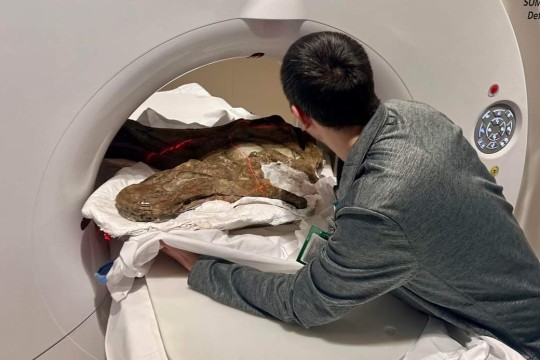
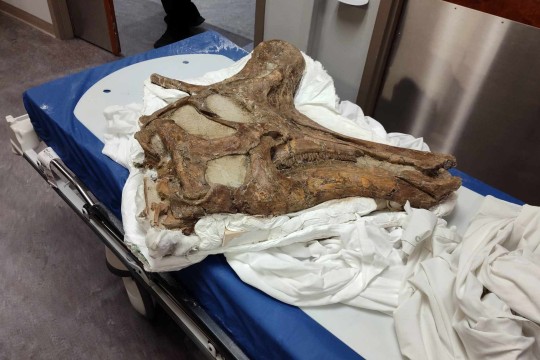
Liberty's cradle had to be trimmed three times so it'd fit in the scanner. Upon seeing the scans, the techs were taken aback at how little room there is for a brain - it's all nasal cavity, all the way up.
#liberty#lambeosaurus#badlands dinosaur museum#paleoblr#palaeontology#dinosaurs#science#paleontology#palaeoblr#fossils#fossil#hadrosaur#prehistoric#museum
876 notes
·
View notes
Text
Yesterday our paleo crew got together to get some of our best specimens CT scanned at CHI St. Alexius Hospital in Dickinson. The scans are already revealing things about the internal processes of dinosaur skulls that wouldn't normally be visible. Much more will be elucidated upon further study.
We aim to reconstruct our Lambeosaurus' resonating chamber to hear its honk, show off the D. wilsoni holotype's replacement teeth and abscess, and see just how small ceratopsians' brains really were.
#paleontology#palaeontology#science#paleo#palaeo#badlands dinosaur museum#dinosaurs#fossils#museums#natural history#Lambeosaurus#liberty#Daspletosaurus#sisyphus#museum
69 notes
·
View notes
Text



Sisyphus, holotype of Daspletosaurus wilsoni is now on display at Badlands Dinosaur Museum! The cranial elements will be added after they undergo CT scanning.
#paleontology#paleoblr#palaeontology#palaeoblr#fossils#dinosaurs#fossil prep#daspletosaurus#daspletosaurus wilsoni#prehistoric#Sisyphus#science#art#tyrannosaur#theropod#cretaceous#judith river formation#museum
238 notes
·
View notes
Text
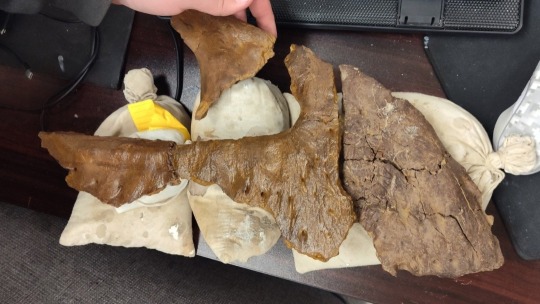
The maxilla of Holger (one of our Daspletosaurus) is coming together quite nicely. The newest piece is on the far left.
#badlands dinosaur museum#fossil prep#paleontology#paleoblr#palaeontology#dinosaurs#palaeoblr#Daspletosaurus#tyrannosaur#cretaceous#theropod#holger
184 notes
·
View notes
Text

Happy Fossil Friday! This is the skull of Liberty the Lambeosaurus from the upper Judith River formation near Havre, Montana. It was found by Jack Wilson and Denver Fowler in 2020 and its preparation is nearing completion in our lab.
209 notes
·
View notes
Text

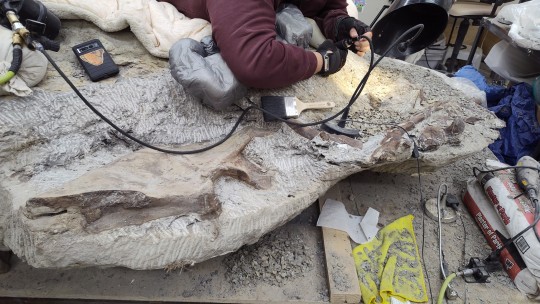
Progress is being made on the tyrannosaur block! Steve is removing pounds of matrix to expose the neck of Tantalus/Denver's Tyranno/Little Denver (nickname debate ongoing) with the ZPT-BR (ZOIC Bronto). This dinosaur was found in the "death pose", meaning its neck is bent over its back. The top of the head should be near the hip region.
#i personally want it to be nicknamed Tantalus so it'd match the mythical figure theme and it simply goes hard#dinosaurs#paleontology#palaeontology#paleoblr#palaeoblr#badlands dinosaur museum#fossil#fossil preparation#tyrannosaur#Daspletosaurus#gorgosaurus#judith river formation#colleague prep#tantalus
411 notes
·
View notes
Text
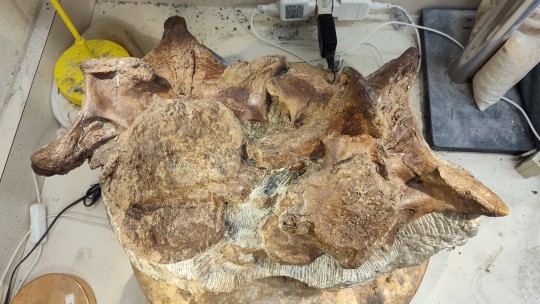

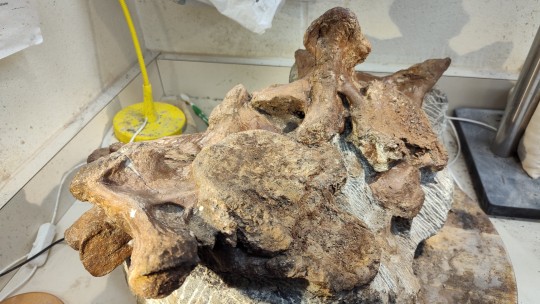
With the completion of the cervical block, the holotype of Daspletosaurus wilsoni has been fully prepared. Approximately 350 hours shared between both Annamarie Fadorsen and I.
#click for higher res#Badlands Dinosaur Museum#Daspletosaurus#paleoblr#palaeoblr#palaeontology#paleontology#fossil#fossils#fossil preparation#dinosaurs#tyrannosaur#fossil prep#Daspletosaurus wilsoni
179 notes
·
View notes
Text

Happy Fossil Friday! This is the skull of Liberty the Lambeosaurus from the upper Judith River formation near Havre, Montana. It was found by Jack Wilson and Denver Fowler in 2020 and its preparation is nearing completion in our lab.
#fossilfriday#dinosaurs#paleontology#palaeoblr#paleoblr#palaeontology#badlands dinosaur museum#fossils#photography#biology#geology#lambeosaurus#prehistoric#extinct#Liberty
209 notes
·
View notes
Text

@wastedshadowsofthelight
Yeah I probably should have just labeled them as "micros". They're microfossils for us because they're usually small elements from large animals that get the occasional microvertebrates thrown in there too lol
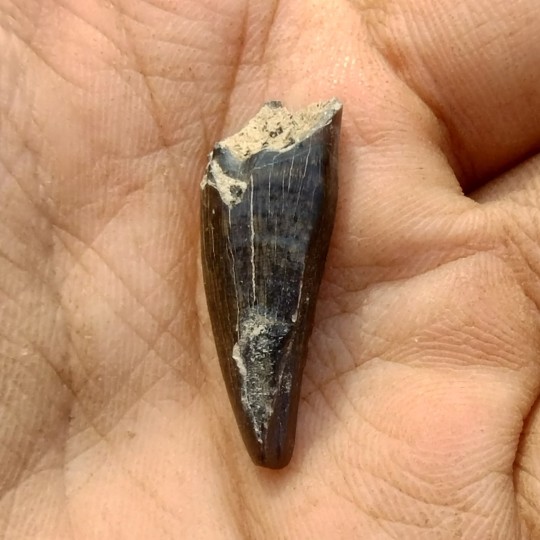


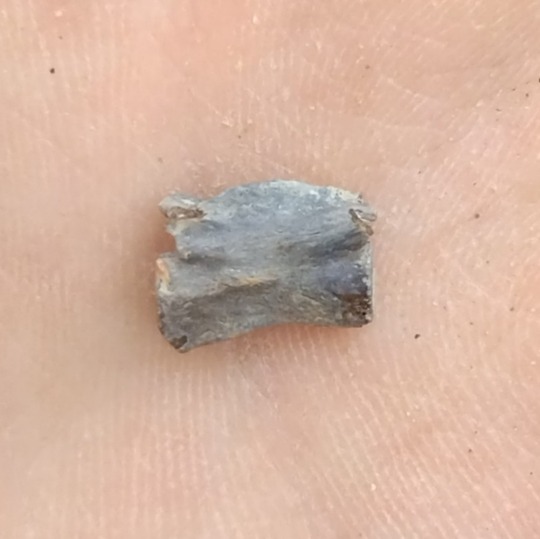

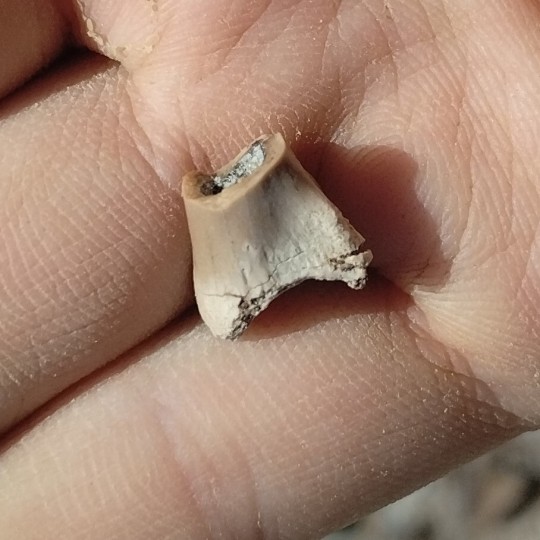



Microfossils from the Judith River Formation near Hinsdale, Montana, 2023 fieldwork season.
390 notes
·
View notes
Text

#Badlands Dinosaur Museum#tyrannosaur#dinosaurs#paleontology#palaeontology#paleoblr#palaeoblr#t rex#Daspletosaurus
108 notes
·
View notes
Text
Preparing a Lambeosaurus
Jacket 1: cervical vertebra, ribs, ilium

Jacket containing a cervical vertebra, two cervical ribs, a dorsal rib, and part of the ilium.
The jacket was cut open with a cast cutter. Bulk matrix was removed with a ZOIC Velociraptor (ZPT-VR).

Jacket with the top cut off to expose the fossils
The matrix around the cervical vertebra was difficult to distinguish from the bone due to similar color and texture. The process of cleaning it was cyclical: air scribe, scrub with acetone, Paraloid, rinse and repeat.




The vertebra which was crushed post-burial
Preparing the ribs was standard procedure. Once out of the jacket, scrub with acetone (some will fall apart), piece together with thick paraloid, then stabilize them vertically in sand.
Gaps were filled in with gray Apoxie and the bones were coated with thin Paraloid.

Upper box: portion of the ilium, bone chunks
Lower box: ribs, zygapophyses, and bone chunks (in bags)
Air abrasion was utilized as a final touch on the ilium. The rest of it is still in the skull jacket, so once the jacket is flipped and the ilium removed, then it will be pieced back together.
#liberty#lambeosaurus#badlands dinosaur museum#fossils#dinosaurs#hadrosaur#judith river formation#paleoblr#fossil#palaeoblr#fossil prep#lambeosaurus project
105 notes
·
View notes
Text









Microfossils from the Judith River Formation near Hinsdale, Montana, 2023 fieldwork season.
#microfossils#microsite#badlands dinosaur museum#paleo fieldwork#fossils#dinosaurs#tyrannosaur#theropod#paleontology#palaeontology#paleoblr#palaeoblr#fieldwork 2023#my finds
390 notes
·
View notes
Text

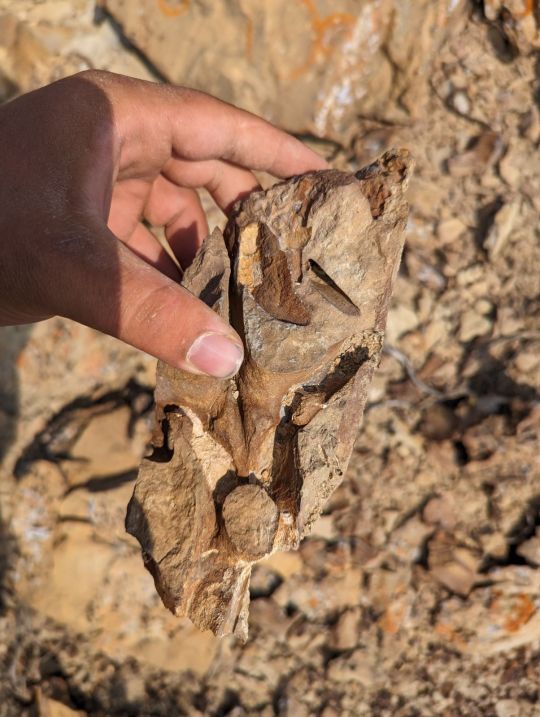

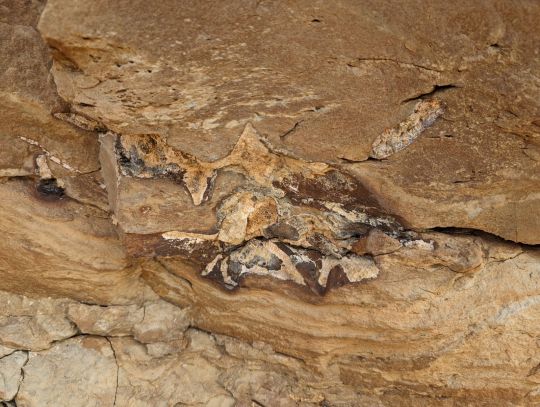
Choking River is a monotaxic bonebed composed of dozens of juvenile and subadult Brachylophosaurus sp. in various degrees of articulation.
#paleontology#palaeontology#paleoblr#palaeoblr#fieldwork#Brachylophosaurus#hadrosaur#judith river formation#fieldwork 2023#badlands dinosaur museum#prehistoric#extinct#dinosaurs
74 notes
·
View notes
Text

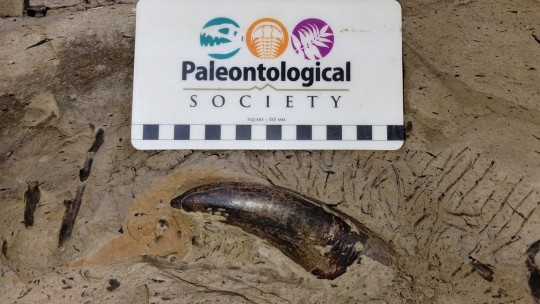




Bighorn Bonebed near Hinsdale, MT, 2023 field season. This site preserves multiple Brachylophosaurus sp. who died in a group.
#palaeontology#paleontology#paleoblr#palaeoblr#fossils#fossil#dinosaurs#bighorn Bonebed#fieldwork#photography#Hinsdale#animals#fieldwork 2023
128 notes
·
View notes
Text
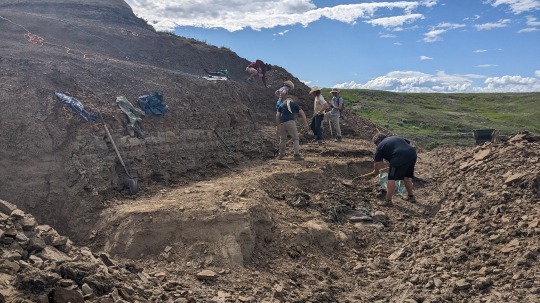




Jack's Bonebed and the Liberty Quarry near Havre MT. 2023 fieldwork season.
#Badlands Dinosaur Museum#fieldwork#fieldwork 2023#paleontology#palaeontology#dinosaurs#fossils#liberty#Daspletosaurus#tyrannosaur#hadrosaur#lambeosaurus#palaeoblr
65 notes
·
View notes
Note
I have a question: how do you get taught to do fossil preparation? Do you start practicing on plain rocks just to learn how the tools work, or something else? I found one of my old plaster egg things and just started wondering.
Also, this blog is super cool I love hearing about how it works.
Some of the very best preparators I know claim to have started with fossils they collected on their own, and it was the same way with me. We'd look up ways to get our fossils out of the rock and would use dental picks and other easily available tools, breaking fossils in the process and making lots of mistakes, so that when we finally got the opportunity to volunteer at a museum we knew a few things.
Every institution is different in how it teaches people how to prepare fossils. The most common practice is to assign a volunteer a fossil and a manual tool of some kind to be used under a microscope. Usually the first tools are dental picks because they're made of stainless steel which doesn't tend to scratch fossils as easily as the tungsten carbide in pin vises. Later on, carbide tools like pin vises and airscribes will be introduced.
I'm happy to educate people on what we do behind the scenes since it doesn't get as much attention as research.
#thanks for the question and the kind words!#paleontology#palaeontology#paleoblr#palaeoblr#dinosaurs#fossils#fossil preparation#fossil prep
42 notes
·
View notes